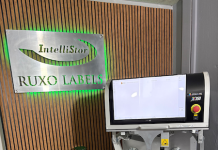TCO (Total Cost of Ownership) is a calculation that is important and should inform your investment decision. Focus Label Machinery discusses the additional costs you should factor in when determining any digital printing press’s TCO.
1) The machine’s dependability
At some stage, your digital press is bound to require the attention of a maintenance team. It is likely the supplier has no engineers situated in your area, and it can be expensive to have one flown in – especially if they are not based in your location. To gain a realistic idea of the likely ownership cost, research what other customers have said about the machine’s dependability. Also, find out what the maintenance and service fees are, and how long the machine’s warranty lasts for.
2) Consumables
Apart from inks, what other costs need to be considered or factored in? Obviously maintaining a print head is vital for quality and consistency. Print heads need regular flushing with special solutions supplied by the ink/print head supplier. Unfortunately print heads can become defective due to electrical faults, ink contamination or operator damage. Often this will result in replacing one or more heads rarely under warranty, which can be costly. Having a good service contract or insurance cover may negate some of this cost. There is no hard rule on how long a print head will last – consider it an ongoing annual cost.
3) Special deals
A number of digital equipment manufacturers promote a low entry level contract on cost of service and consumables for an initial 12 months. While this is attractive short term in building a digital business it can lead to problems down the line when the real cost of ownership comes to light after the honeymoon period is over. Don’t attempt to build your business on the foundation of a low cost consumables deal. Remember the supplier’s business model is based on high profit from sale of consumables to you.
4) Print run speed
When selecting a digital printing press, businesses tend to base their choice on the machine’s top speed. The manufacturers of these presses show high quality samples, on their choice of substrate and then subsequently state the top speed. However, they neglect to mention that the top speed cannot produce that level of quality on all substrates.
High speed printing inevitably results in lower quality prints, so it is rarely a viable option for industries like fashion – where there’s a huge demand for intricate, good quality labels and on-garment prints. To accurately compare one digital printing press with another, you should examine a number of samples of a similar quality – on a variety of substrates – then find out at what speed setting each printer created those samples. Test your own artwork on your substrates.
5) Incidental ink usage
Before commencing a print run, following a period of inactivity, most presses have to flush themselves out to ensure that their nozzles are ready. The ink they use to do this is wasted. Continuous ink re-circulation technology circulates the ink repeatedly, which stops dried ink accumulating on the nozzles. Digital textile presses that do not have this innovative technology can use up to 30% more ink than alternatives that do.
6) Cleaning cycle frequency
High quality digital ink can travel smoothly through the print heads. By opting for this type of ink, you will ensure that your printer needs fewer cleaning cycles. In turn, this will mean that less ink is wasted and more metres of printing per hour can be completed. This is why you should find out what number of cleaning cycles are required with the ink you choose for your machine. Moreover, you should determine how that affects the quantity of metres that can be printed per hour.
[sc name=”subscribe-socialmedia” ]
[sc name=”submit-newsvideos” ]
Focus Label Machinery partners with a South African representative for their products. For more information, contact:





















